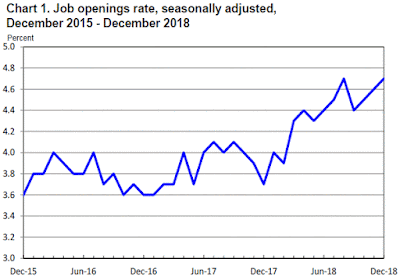Gross Domestic Product (GDP): First Estimate for Q4, 2018
Predicted: +2.2%
Actual: +2.6%
The yellow-highlighted percentage represents the quarter-to-quarter change for Real Gross Domestic Product for the entire United States.
The GDP is a very broad measure of economic activity for the entire United States, covering all sectors of the economy. The Commerce Department defines real GDP as, "the output of goods and services produced by labor and property located in the United States."
============
 |
| Chart: GDP - Q4 2018 - First Estimate |
============
Labels: GDP, gross_domestic_product, hard_data
|
--> www.FedPrimeRate.com Privacy Policy <--
CLICK HERE to JUMP to the TOP of THIS PAGE > SITEMAP < |






